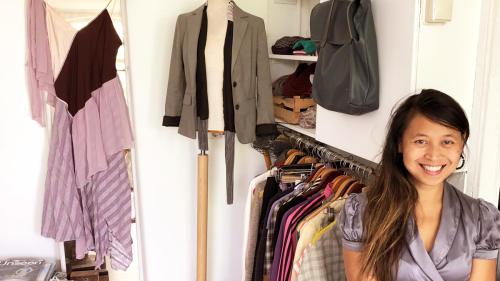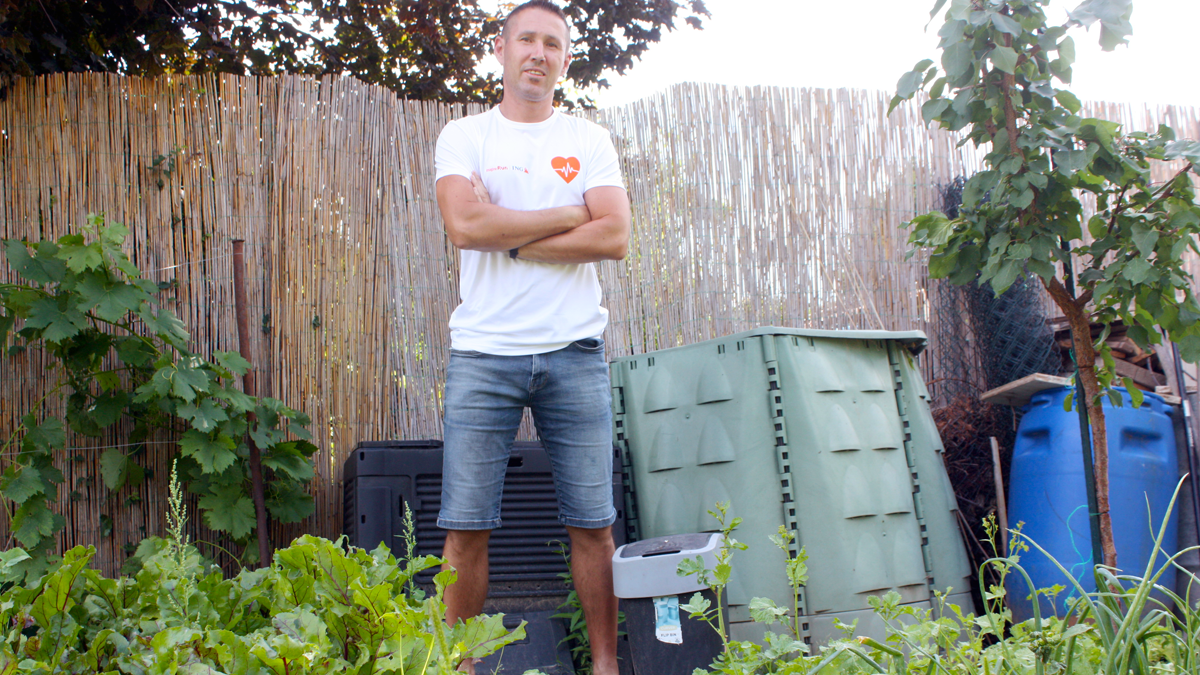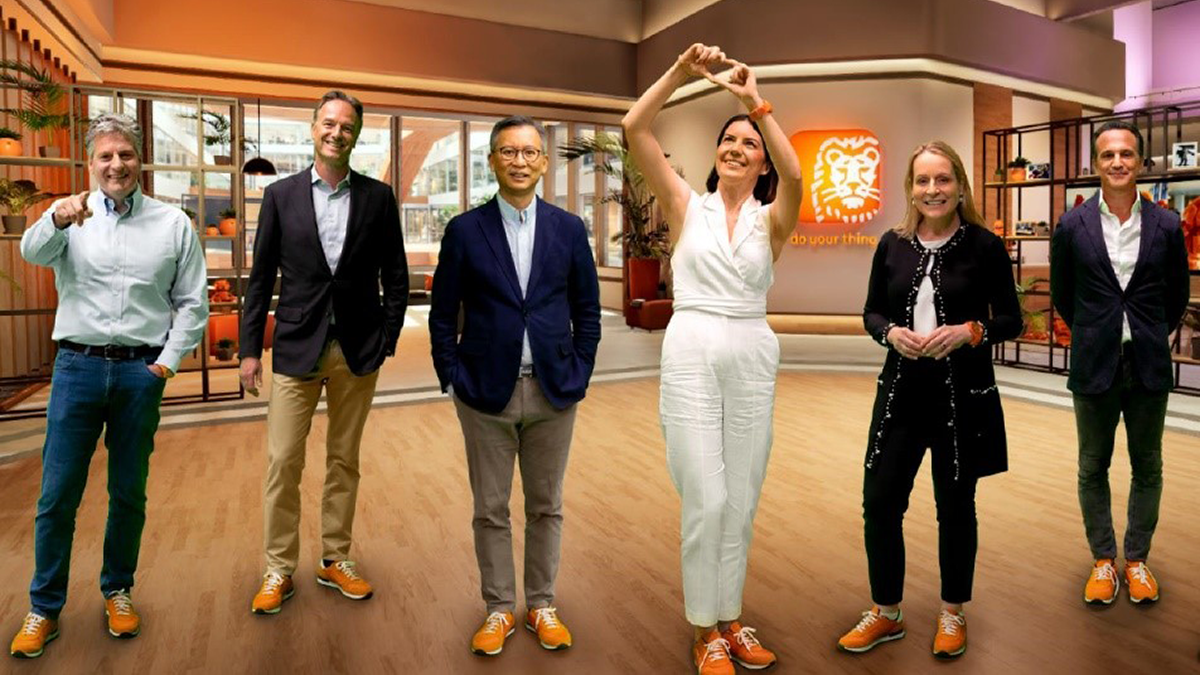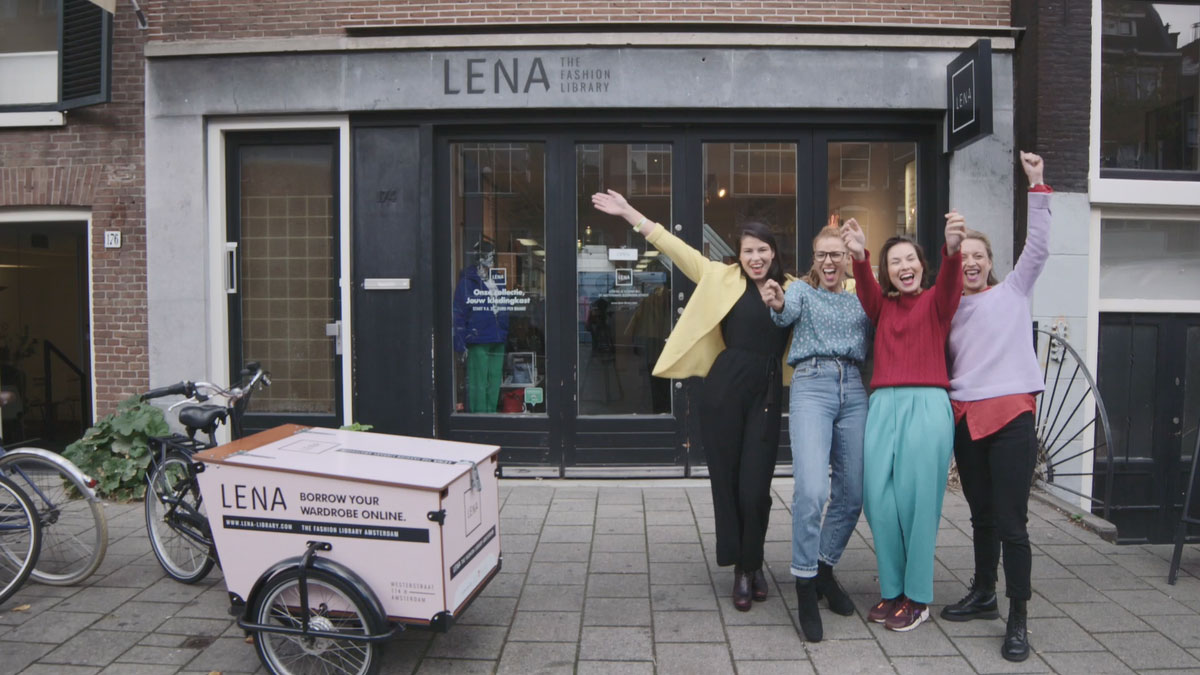The hidden cost of clothes
The world has a unique chance to build back better after the coronavirus pandemic. But what about us average people? Do these unique circumstances give us some unique inspiration to make a few changes of our own?

Nanette Hogervorst at home with her closet.
This four-part series features colleagues who have made certain choices to live more sustainably. They’re not perfect, so they’re not here to make the rest of us feel bad. But every marathon starts with one small step. Maybe this can inspire you to take yours.
Nanette Hogervorst, a former ING colleague who started sustainable fashion platform Our World, tells in her own words about sustainable fashion and what it means to her.
“I’ve always had side projects next to my work. I used to volunteer at Amnesty International and even taught classical ballet. I had an interest in sustainability and fashion because it combines a billion-dollar industry with aesthetics, design and art, a combination of things I’m passionate about.
“After starting an online sustainable fashion magazine next to my work at ING in 2017, I came up with an idea for a sustainable fashion gift card. It isn’t only for buying clothes – you can use it to learn how to repair clothes, or for advice from a sustainable style coach for example.
“I chose a gift card because it’s easy and it’s positive. In the end, many people who receive them aren’t necessarily into sustainability, but through the gift card they discover how they can dress more consciously and wind up doing ‘good’ almost accidentally, without having to feel the negative pressure of having to save the world. I knew it was too much work to do next to my job in global communications at ING. I thought, OK, this is important to me, I’ve been at ING for a while, I should go for it. And then I jumped.”
Consuming more consciously
“There’s no official definition of sustainable fashion, but it’s essentially fashion that doesn’t have a negative impact on the world. For me, it’s more about how we can consume clothing in a more conscious way. It’s not only about buying clothes but also about not buying clothes – asking do you need it, can you get it second hand, can you repair it instead of replacing it?
“Because even if the clothes you’re buying are sustainable, resources are still needed to make it, which costs energy, water, and then it needs to be transported from the factory to the store or your house. The environmental impact of fashion has been getting more attention lately.
“I don’t think human rights issues in fashion have always had the attention it deserves. First, there’s wages – not only minimum wage, but NGOs strive for workers to get paid at least a living wage. This means they have money to pay for healthcare, education, etc. On average the wages paid in the garment industry are two to five times less than the living wage.
“Second is safety. There was the tragic garment factory collapse in Bangladesh in 2013. There have been improvements to building safety since then, but it’s also about the machines the workers have to use. Do they have safety equipment? And third is about freedom of association. Are workers allowed to be critical and demand better treatment?”
Sustainable doesn’t mean ugly
“Of course you can dress sustainably and still look good! Sustainable fashion used to be very minimalistic, with earthy colours and a bit boring. Clothes were designed to be timeless, so not according to trends that you can only wear a short time. But now there are more and more young designers that want to design in a more sustainable way and there’s much more variety. That’s important, because if there’s only one type of style you can’t reach everyone.
“But due to fast fashion, there are already so many clothes in the world. We’re producing approximately double the amount of clothing than we did 15 years ago, but we use the clothes half as long. This has put immense pressure on the earth’s scarce resources. For example, to produce one cotton t-shirt you need 2,700 litres of water.
“The easiest way to be more sustainable is to use clothes longer. Research shows that if you wear a garment an extra nine months, you would reduce carbon, water, and waste footprints by around 20%–30% each.
“If you want to buy sustainably, a good start is to look at the label. It’s not always accurate, but it does make you more aware of what you’re actually wearing. It usually says where it’s produced, and although there are also cases of misconduct found in Europe, generally you should be able to trust that it’s produced under better conditions for the workers because European regulations are stricter.
“The label also usually says what material it’s made from. Is it cotton or organic cotton? Does it include recycled materials? Mixed fabrics are hardest to recycle. So if you think recycling is important, then choose something made from one material. Or do you think it’s more important if the material is organic? Then choose that. A next step is to check apps like Good on you, that rank brands on sustainability or to start for looking sustainable brands.”
When it’s fun, it’s easier
“There are a lot of options for people who want to start with sustainable fashion. It’s not only about buying clothes, it’s about buying differently. Do I really need this? Maybe try going to clothing swap parties, using clothing libraries or rentals, buying second-hand clothes. If you don’t shop a lot maybe it is an idea to look for a sustainable brand, as the quality is usually higher. So you may pay a little more but it lasts much longer.
“Start with figuring out what you find important and seeing how you can go about it more sustainably. Like, I’m not the person for a 30-item capsule collection – I do want to wear different things every day! So to still be me, but more sustainably, a clothing library works. Just see what fits you and how you can do that in a more sustainable way.
“Once you start it is easier to go for a next step. It’s easy and fun, and when something is fun it’s easier to continue!”

“Nanette makes some really good points. At ING, we don’t do a lot of business in the garment industry, where the main challenges relate to responsible sourcing of materials, processing and the working conditions around the actual manufacturing. But we have strict measures in place to keep us from funding companies or projects with potential human rights issues in all sectors.
We assess every corporate client and transaction against the requirements of ING’s Environmental and Social Risk (ESR) policy framework. Human rights are a key aspect of this ESR framework. We have a human rights policy, plus specific policies for sectors known to be sensitive to human-rights-related issues, like agriculture, mining and manufacturing.” – Tessa Maksimovic, global ESR advisor with ING’s ESR team.
Nanette’s reading list:
- Nanette’s Sustainable fashion gift card
- Driving circular consumption in fashion (ING research, p. 13. PDF, 3.33 MB)
- Good on you (an app that rates brands on their sustainability)
- Fashion for Good Experience , innovation platform including a sustainable fashion museum
- Fashion Revolution , the biggest sustainable fashion movement



